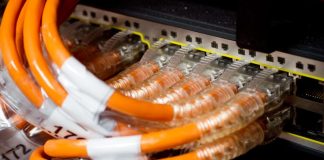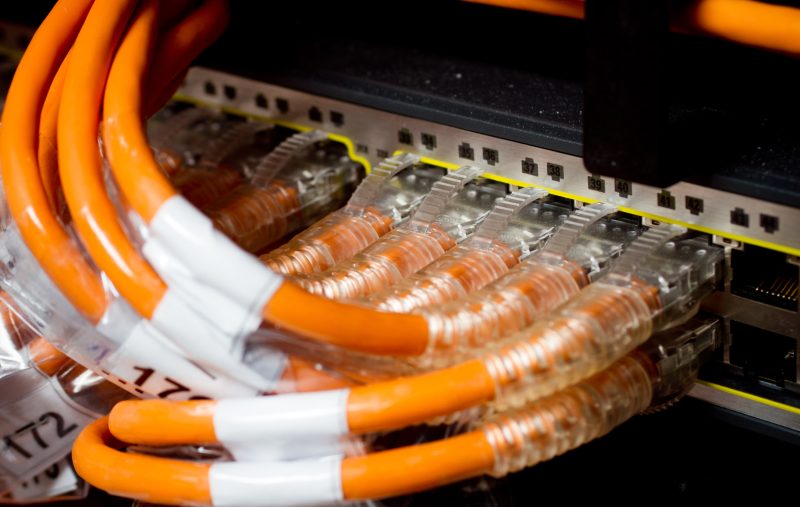Tired of waiting for files to transfer between your office and the rest of your department on the other side of the building? Consider adding a layer 3 switch to your network.
A layer 3 switch is a switch performs routing functions in addition to switching. These switches offer great advantages when properly managed in a busy corporate network.
Network switches operate at layer 2 (data link) of the OSI model (Open Systems Interconnection Model) while network routers operate at layer 3 (network). A layer 3 switch is a specialized hardware device used in network routing. A layer 3 switch and a router can support the same routing protocols, inspect incoming packets and make routing decisions based on the source and destination addresses inside.
One of the main advantages of a layer 3 switch over a router is in the way routing decisions are performed. Layer 3 switches are less likely to experience network latency since packets don’t have to make additional steps through a router.
Purpose of a layer 3 switch
Layer 3 switches were invented to improve network routing performance on large local area networks like corporate intranets. Large corporate intranets became traffic jammed with layer 2 switches. Layer 2 Switches are basically counting machines. They note which MAC (Media Access Control) address comes out of each port on a switch and switch port responds to a request for traffic. The first packet that goes out from your computer asking for the internet may be broadcast to all ports. “Which port is for the Internet?” One port responds and the switch stores that information in a MAC address table. In a small office, a switch does not need a big MAC address table.
In a large corporate intranet, if only using Layer 2 switching, then the MAC tables would have to be very large to keep track of where each packet should be switched to. The bigger the intranets, the more precarious and traffic-clogged the network became.
What if a switch could examine the packet coming into the switch and examine the IP address it was looking for and know by a simple address table – let’s call this the “routing table” and skip the MAC address table and simply be “routed” to the correct switching port.
This would cut network traffic, reduce MAC address table look-up’s and reduce the time the packet was passing through the switch. Hence, the layer 3 switch was born.
Having been designed for use on intranets, a layer 3 switch will typically not possess the Wide Area Network (WAN) ports designed to take users to the internet but will pass that traffic to routers who will manage that work.
Let’s take a step back: What is a network layer?
In the 1980s, all major computer and telecommunications companies adopted the OSI model. This model described seven layers that network and computer systems should use to function together. If you understand this model, then looking a business or data center, one can see the parts of the OSI model in action.
Lets focus on lower layers for a better understanding of switching
- Layer 1 is the physical layer. It is the cable that carries the data from port-to-port. In most offices this is Cat 6 or Cat 7 wiring.
- Layer 2 is the data link layer. This layer is composed of two parts: Logical Link Control (LLC) and the Media Access Control (MAC). The LLC identifies network protocols, performs error checking and synchronizes frames. The MAC address is a unique hexadecimal number assigned to every network port. Each of these devices (network ports on a computer, network ports on a switch, or router) includes their MAC address on most packets that leave their port.
- Layer 3 is the network layer. When anyone asks for your IP address, they are asking for your Layer 3 address. The network layer has two main functions. The first is to break up segments into network packets and then to reassemble the packets on the receiving end. The other is to route packets by discovering the best path across a physical network.
- Layer 4 is the transport layer. The transport layer takes data transferred from the session layer (Layer 5) and break a packet of data into “segments” on the transmitting end. Devices or software on the receiving end are responsible for reassembling the segments, turning it back into data that can be used by the session layer. The transport layer accomplishes a number of other important tasks such as flow control – sending data at a rate that matches the connection speed of the receiving device, and error control – checking if data was received incorrectly and if not, requesting it again.
- Multilayer switching can make routing and switching choices based on MAC address and protocol field in a data link frame, IP address and protocol field in the network layer header, and port numbers in the transport layer header.
If the mail were delivered like layer 2 switches, one would have to look up every person’s address for every package that came in. Layer 3 mail would be mail that would look up the Zip code or Postal code or more general address first. If the Layer 3 knew what to do with that zip code, no need to look up the name. That packet in the pre-designated port. That decision to either switch the packet or rout the packet is the primary function of Layer 3 or Multilayer switches.
So why get a layer 3 switch: Advantages
A typical network design before Layer 3 switches would be to switch people in one location and route network traffic between the various locations. While simple for the network engineer to assemble, it meant that if one department of people were physically separated, then their communications would have to be both switched to get out of one location and routed between those locations and then switched again once upon arrival into the next layer 2 network. Transferring files in this kind of environment is challenging.
Removing layer 2 switches and expensive routers and adding layer 3 switches would significantly cut that file transfer time and result in a lower cost network that does far more. Packets could be directed to another subnet and switched to the destination network port simultaneously. This Layer 3 or multilayer switch uses the quickness of an Ethernet switch and certain attributes of a router to construct advanced, high-speed Ethernet networks. Simply put layer 3 switches:
- Reduce broadcast traffic, reduce traffic congestion and decrease switch latency
- Simplify security management
- Improve one’s ability to analyze network switches
- Lower per-port cost compared to routers
What to look for when purchasing a layer 3 switch
Important parameters one should consider when buying a Layer 3 switch include the cost, number of VLANS, the memory of MAC address, latency, forwarding rate, and backplane bandwidth. The forwarding rate, also called the throughput rate, is the forwarding capabilities of a backplane. The backplane bandwidth, also called the switch fabric capacity, is the sum of the speeds of all the ports.
- Layer 3 switches available for purchase on NetworkTigers.
- More on choosing network switches; Part I and Part II.


